Mumbai Street Food: Vital Food
The street culture of urban India is a multi-sensory experience. This is where life happens with daily acts such as walking, talking, running, sleeping, reading, shaving, cleaning, working, meeting, buying, selling, cooking and eating. The street provides an unparalleled setting for social interactions and the experience of urban life. Likewise, the streets of Mumbai city present grand and dynamic possibilities for the ultimate experience of urban life in India. For indeed, the city is forever on the move; it is full of life and vitality. At four in the morning, the city folks can be seen up and about at the seafront, enjoying life to the fullest.
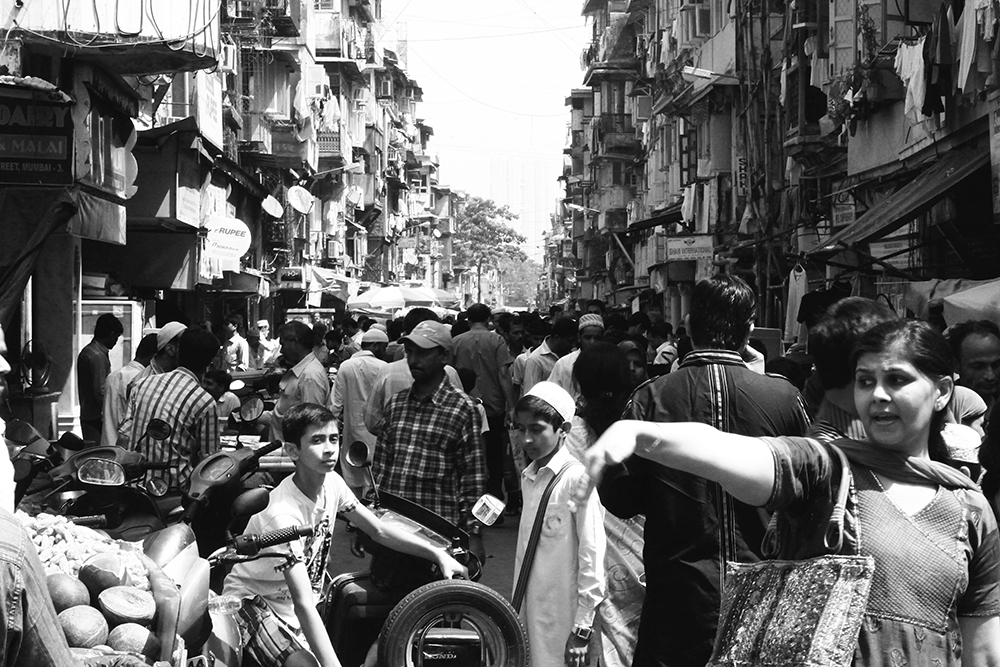
The bustling streets of Mumbai
The city of Mumbai can be considered to be one of India's most cosmopolitan cities and it is here that people from all over India come to try their chance at life. It is truly the place where dreams are made and shattered for countless migrants. A noted filmmaker and screenwriter called the city, "the struggle, the vitality, hope, the aspiration to be something, anything." Noted as a central hub of commercial, film and advertising interests, Mumbai is a glittery prospect for those looking to hit the jackpot. It is not surprising, therefore, to find the city buzzing with electrifying energy and vibrancy. This spirit can be most intensely experienced on the streets. The streets of Mumbai offer, among many things, countless gastronomical delights.
In the Indian context, one of the earliest traditions of public dining can be traced to the caravanserai also called the khan which flourished during the Mughal period. These caravanserais were set up in cities and towns for providing food and drinks to weary travellers and were often vibrant sites offering delicious ready-made fare. The food vendors at street corners and those who sell food from handcarts of today can be said to carry forward the spirit of the caravanserai. Such a public form of food consumption has come a long way in the Indian subcontinent.
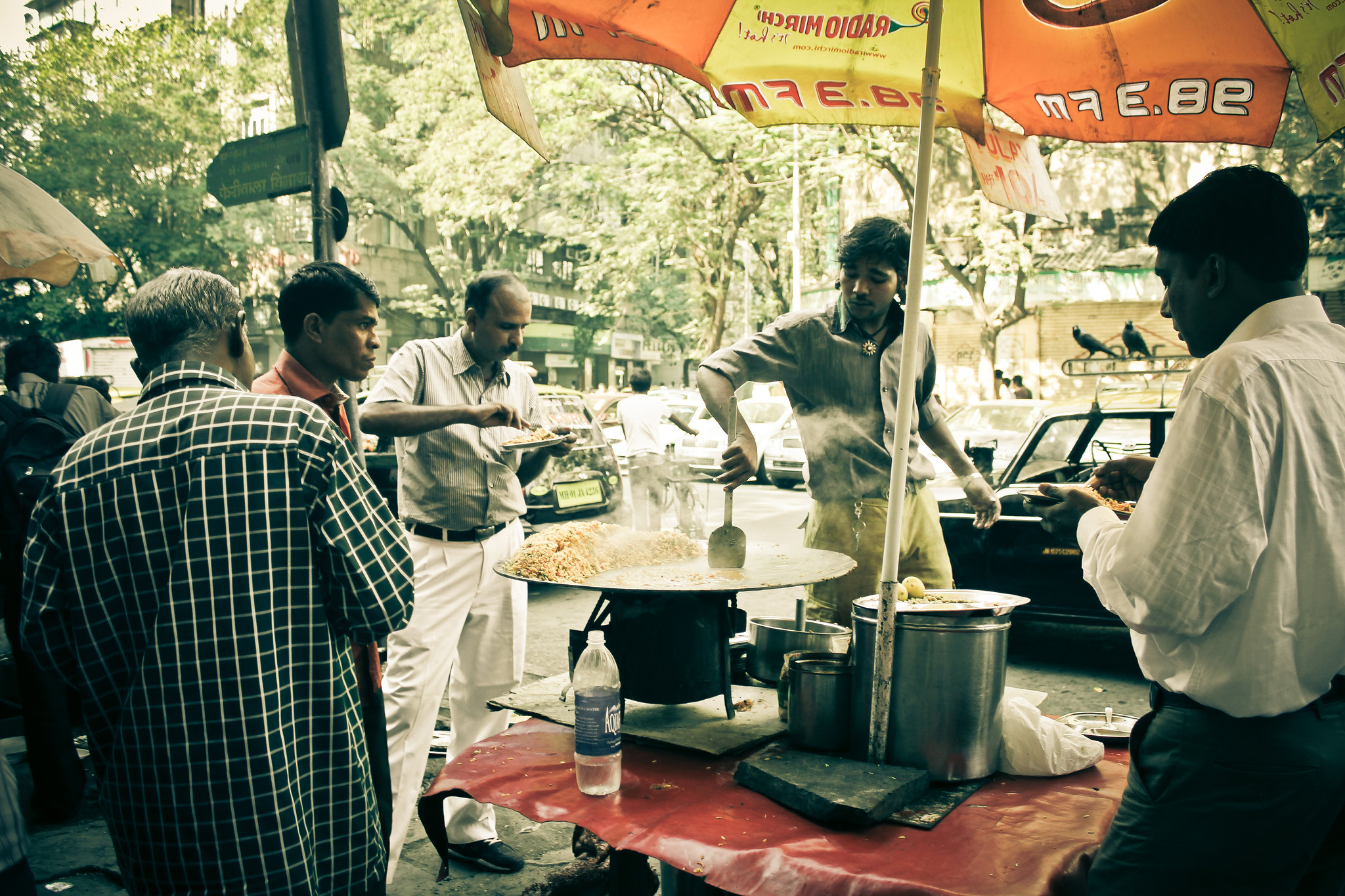
Street food caters to a wide variety of population of the city, Image Source: Flickr
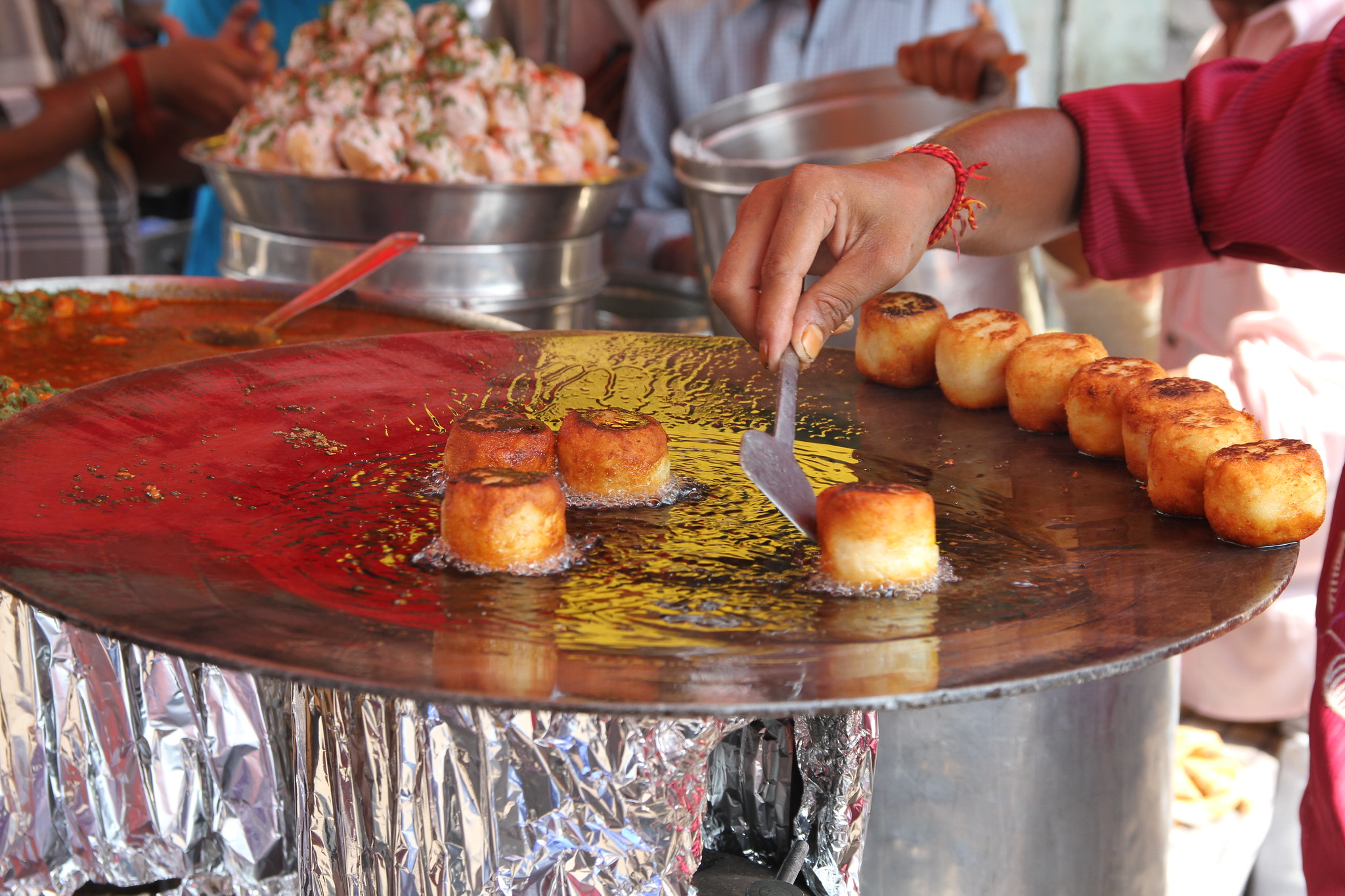
Aloo-tikkis being fried, Image Source: Flickr
Mumbai is a popular destination when it comes to street food. Certain street food items have captured the imagination of the Mumbai public so much so that the city itself has come to be associated with them, like the iconic Bhelpuri or the Vada-pao. So, when a traveller goes to Mumbai, it is expected of them to get a taste of the famed Bhelpuri at Chowpatty beach. The street food culture of the city is embraced by a wide cross-section of the population from office workers, students, daily wage labourers, businessmen among others. A wide variety of food is offered on the streets despite the persistent problems of storage, regular water supply, policing and weather, faced by the street food vendors.
The Vada-pao consists of the Vada and the Pao. The Vada is a fried ball of battered potato, which is crushed in between two soft buns called the Pao. The bun is slathered with a sweet and spicy Chutney before the Vada is crushed between them. The Vada-pao is served with fried green chillies. It is Mumbai's most famous snack. It is sold by vendors in front of train stations, schools, hospitals, colleges, offices, street corners and parks. This cheap, tasty and filling snack is heartily consumed by a wide cross-section of the Mumbai public. Like most street foods, the Vada-pao is a convenience-food, it fulfills the roles of providing both sustenance and leisure for people. Another classic Mumbai street food is the Bhelpuri. It is intimately associated with the streets of the City of Dreams. The strains of a popular Bollywood song go as follows: “Mein toh raste se jaa rahi thi, bhelpuri kha rahi thi” (I was walking on the street, eating Bhelpuri). This casual reference to the snack in the song is significant since it links the snack directly to the every-day activity of walking on the street. The Pao-bhaji is a quintessentially Mumbaiya street snack. This delicious snack is made from mashed mixed vegetables cooked with spices and butter which constitutes the Bhaji. It is served with soft buns or the Pao which have been soaked in butter.
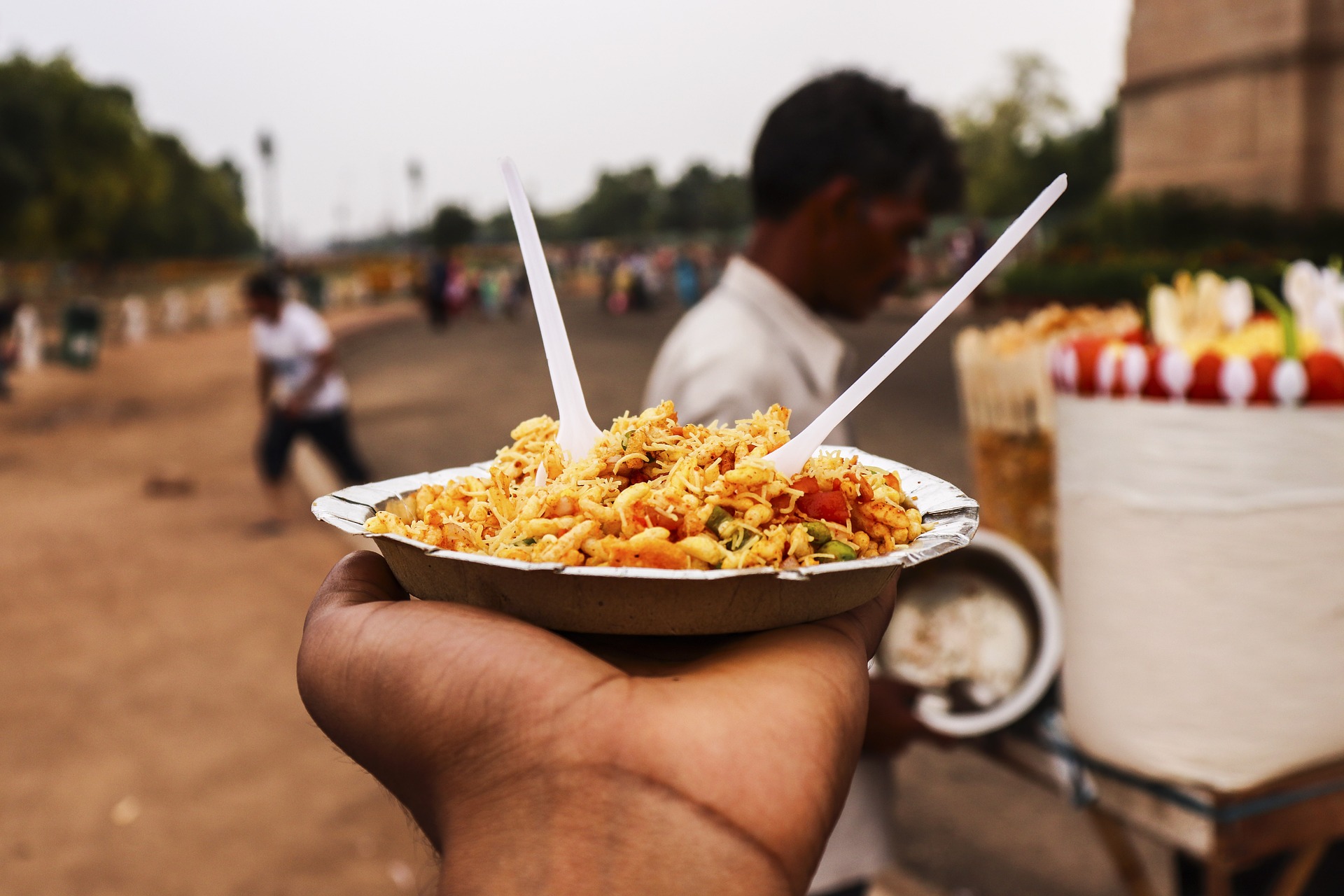
Bhelpuri
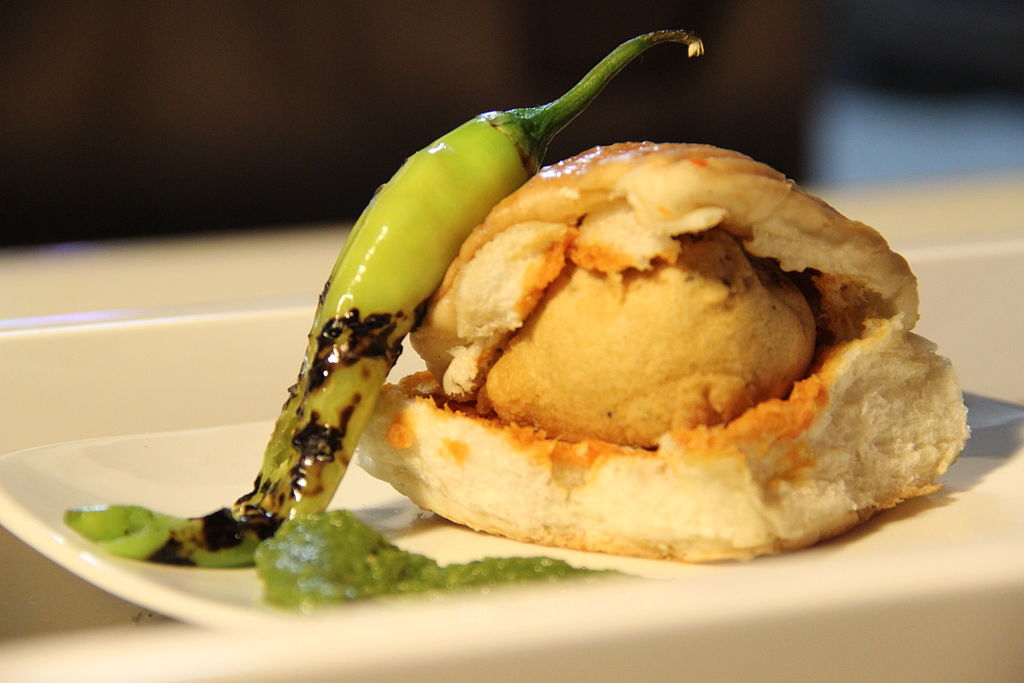
Vada Pao, Image Source: Wikimedia Commons
The Bombay street sandwich is a city-defining snack that is dearly loved by food enthusiasts across culinary lines. This vegetable sandwich consists of white bread stuffed with slices of beetroot, cucumber, boiled potato, tomato and onion. The white bread is first smeared with a generous portion of butter before being stuffed, after which it is firmly pressed in a sandwich maker and cooked over an open flame. The grilled sandwich is finally served with mint and coriander chutney. Some of the best Bombay street sandwich is served at the Fort area, around Kala Ghoda. The Misal-pav consists of a spicy curry made of sprouted moth beans served with potato, Chivda mix, Farsan or Sev and onions. This mix is then garnished with coriander and finished off with a squeeze of lemon. The Pav is soft and served dripping in butter.
There are some popular lanes in the city earmarked by food lovers as Khau Gallis or “treat lanes.” Khau is a Marathi term that stands for 'treat' and these Khau Gallis offer sumptuous street fare of innovative cuisine bearing influences from across the country. At New Marine Lines in Churchgate, there is the Khau Galli which extends from SNDT Women's University to Cross Maidan. Here, students and office workers jostle to get to the best Bombay sandwiches and Frankies. The Bombay-sandwich is a classic street food. It is a toasted sandwich made with cheese, spices and chutney. The Frankie is another unique Mumbaiya street food. It is a Roti (unleavened flatbread) wrap consisting of both vegetarian and non-vegetarian fillings. At the Chhatrapti Shivaji Maharaj Teminus (CSMT), a Khau Galli is lined up with food stalls offering dishes from across the country be it Maharashtra, Tamil Nadu, or Punjab. It is close to the historic Fort area of the city which is a major commercial centre hosting everything from grand colonial-style office buildings, retail stores and street stalls. So, the Khau Galli becomes a convenient food stop for office goers and tourists exploring the amazing colonial heritage architecture. It is one of the major street food destinations of the city. Pao-bhaji and Vada-pao are the main attraction points here. The invention of Pav-bhaji is alleged to have taken place at Canon Pav Bhaji restaurant and it is at this particular Khau Galli where one can find it.
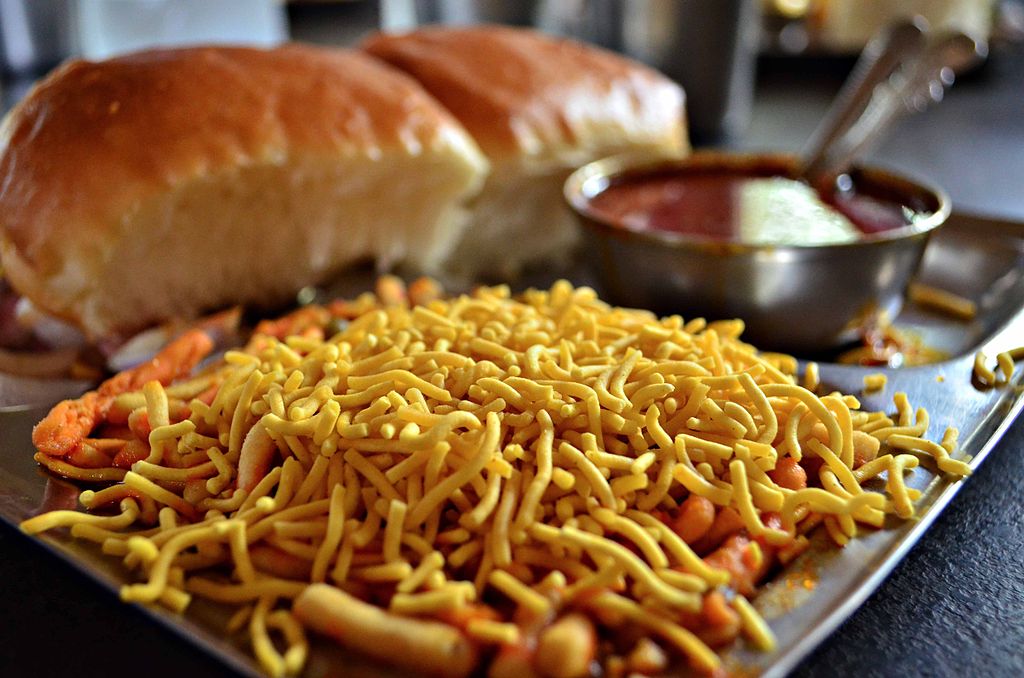
Misal Pav, Image Source: Wikimedia Commons
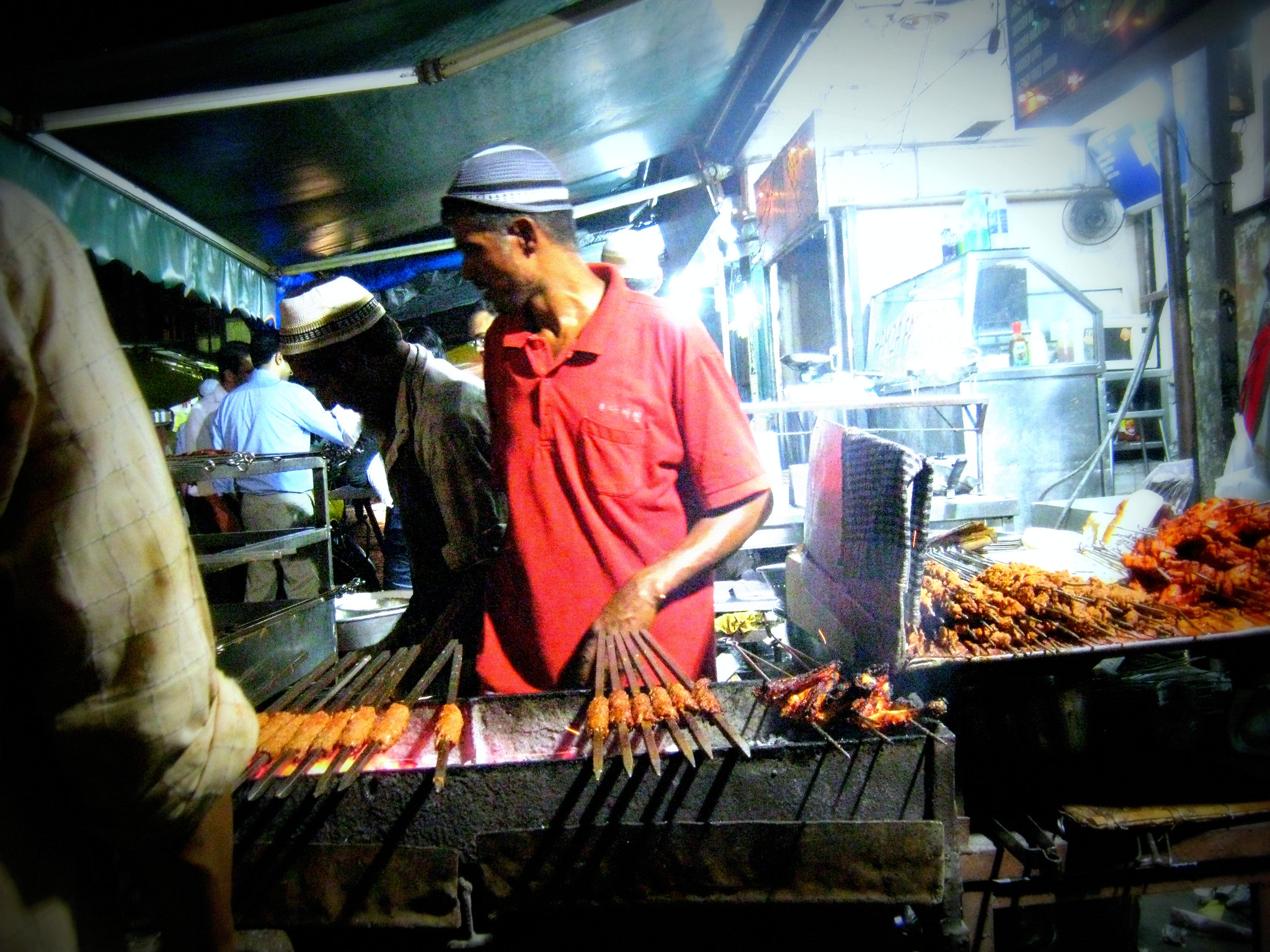
Kebabs being prepared, Image Source: Wikimedia Commons
At Borivali West, located in the northern part of the city, there exists a Khau Galli at Sardar Vallabhbhai Patel Road. It is a hotbed of unique street food creations like the pizza Sev-puri or the Bahubali sandwich. The veritable jewel of Mumbai is the trendy and very upscale Bandra where the street food stalls at the Carter Road Khau Galli offer everything on the street food trail for food enthusiasts. At Mohammad Ali Road, situated near the Minara Masjid in South Mumbai, the world of fine non-vegetarian fare opens up for meat lovers and Mughlai food enthusiasts especially during the holy month of Ramzan. One can find here more than 400 non-vegetarian dishes like Kebabs and Keema, and around 100 desserts like Kheer and Malpua throughout the year. The Ghatkopar Khau Galli is located at the Vallabhbaug Lane Extension and this is where the vegetarians can expect to find delicious items like Dosas and cheesy grilled sandwiches. The cheesy grilled sandwiches are made with generous amounts of grated cheese blocks and the sandwich filling is stuffed with tomatoes, onions and capsicum. Some of the Dosa selections at this Khau Galli include such creations as the thousand island Dosa, ice cream Dosa and the cheese burst Sada Dosa.
Near Crawford Market, Mumbai's largest wholesale market, ravenous shoppers can tuck in at the Princess Street Khau Galli. The famous street food attraction at this Khau Galli is the ice Halwa. The Zaveri Bazar Khau Galli near Marine Lines Station is one of the affordable street food destinations in the city. From across this Khau Galli there is the Mangaldas Market Khau Galli. The snacks featured in these Khau Gallis have a Gujarati flavour to them and include popular items like Pudla, Moong-dal fry, Kachoris, Papri-chaat among others. Among shopping haunts, Santacruz is not only a haven for shoppers in the city but it is also a gem for street food enthusiasts. From popular street food fares like Chaats, Pani-puri, or Sev-puri to the Alu-ragda-pattice, Santacruz Khau Galli has it all. There is the mouth-watering cheese Dabeli made with sinful dollops of butter, refreshing Faluda shake, the ultimate in fusion cuisine- the Chinese Dosa, and the city's quintessential Alu masala cheese toast, among other outlandish snacks. There are many other Khau Gallis in Mumbai which are waiting for the footfalls of the ultimate food lovers. The city is grand in scale and vision, this spirit is well reflected in the overall culture of Mumbai, especially in the resplendent foods of the streets.
 Government of India
Government of India
































 Recognizing the ongoing need to position itself for the digital future, Indian Culture is an initiative by the Ministry of Culture. A platform that hosts data of cultural relevance from various repositories and institutions all over India.
Recognizing the ongoing need to position itself for the digital future, Indian Culture is an initiative by the Ministry of Culture. A platform that hosts data of cultural relevance from various repositories and institutions all over India.

